Melbourne chinatown on:
[Wikipedia]
[Google]
[Amazon]

 Chinatown () is an ethnic enclave in the Melbourne Central Business District, Central Business District (CBD) of Melbourne, Victoria (Australia), Victoria, Australia. Centred at the eastern end of Little Bourke Street, Melbourne, Little Bourke Street, it extends between the corners of Swanston Street, Melbourne, Swanston and Spring Street, Melbourne, Spring streets, and consists of numerous laneways, alleys and arcades. Established in the 1850s during the Victorian gold rush, it is notable for being the longest continuous Chinese settlement in the Western World and the oldest Chinatown in the Southern Hemisphere.
Melbourne's Chinatown has played an important role in establishing the culture of Chinese Australian, Chinese immigrants in Australia, and is still home to many Chinese restaurants, cultural venues, businesses and places of worship. Today, Melbourne's Chinatown is a major Tourism in Melbourne, tourist attraction, known for its architectural heritage, annual festivals and cuisines of Asian origins, as well as its karaoke venues, bars and fashion boutiques.
Beyond Chinatown and the CBD, Melbourne's Chinese community is well-represented in other areas of the city, most notably Box Hill, Victoria, Box Hill, where a $450 million development named "New Chinatown" is currently being constructed.
Chinatown is home to the Chinese Museum, Melbourne, Chinese Museum.
Chinatown () is an ethnic enclave in the Melbourne Central Business District, Central Business District (CBD) of Melbourne, Victoria (Australia), Victoria, Australia. Centred at the eastern end of Little Bourke Street, Melbourne, Little Bourke Street, it extends between the corners of Swanston Street, Melbourne, Swanston and Spring Street, Melbourne, Spring streets, and consists of numerous laneways, alleys and arcades. Established in the 1850s during the Victorian gold rush, it is notable for being the longest continuous Chinese settlement in the Western World and the oldest Chinatown in the Southern Hemisphere.
Melbourne's Chinatown has played an important role in establishing the culture of Chinese Australian, Chinese immigrants in Australia, and is still home to many Chinese restaurants, cultural venues, businesses and places of worship. Today, Melbourne's Chinatown is a major Tourism in Melbourne, tourist attraction, known for its architectural heritage, annual festivals and cuisines of Asian origins, as well as its karaoke venues, bars and fashion boutiques.
Beyond Chinatown and the CBD, Melbourne's Chinese community is well-represented in other areas of the city, most notably Box Hill, Victoria, Box Hill, where a $450 million development named "New Chinatown" is currently being constructed.
Chinatown is home to the Chinese Museum, Melbourne, Chinese Museum.
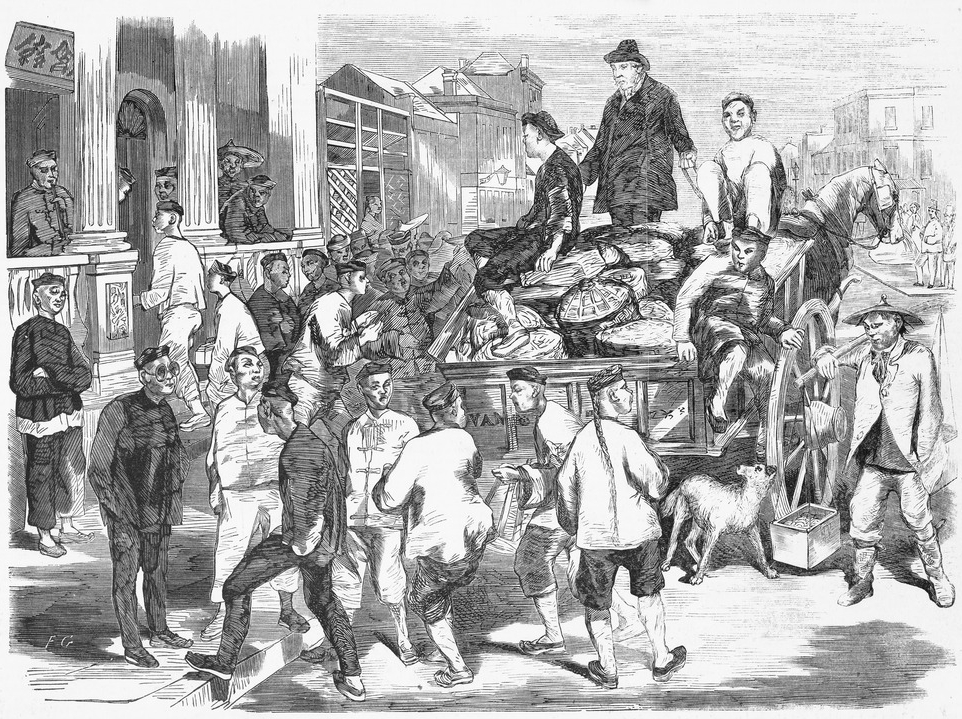 The advent of the Victorian gold rush in 1851 attracted immigrants from around the world, including tens of thousands of Chinese people, Chinese prospectors. The majority were Cantonese-speaking male villagers from Hong Kong and nearby areas, including the southwestern districts of Guangdong (See Yup), and its capital city Guangzhou (Sam Yap). The eastern half of Little Bourke Street was considered convenient for these immigrants, as both a staging post and a place to pick up supplies en route to the goldfields in central Victoria. The earliest lodging houses were established in Celestial Avenue, off Little Bourke Street, and by 1855, Chinese houses and businesses lined the majority of Little Bourke Street from Elizabeth Street, Melbourne, Elizabeth to Russell Street, Melbourne, Russell streets.
It is notable for being the oldest Chinatown in the Southern Hemisphere, and the longest continuous Chinese settlement outside Asia, owing to San Francisco, California, San Francisco's Chinatown, San Francisco, California, Chinatown's relocation following the 1906 San Francisco earthquake, 1906 earthquake. The Victorian gold rush eventually waned, causing a shift from rural living and an influx of people migrating into metropolitan Melbourne, particularly Little Bourke Street, which already had a predominantly Chinese population.
The advent of the Victorian gold rush in 1851 attracted immigrants from around the world, including tens of thousands of Chinese people, Chinese prospectors. The majority were Cantonese-speaking male villagers from Hong Kong and nearby areas, including the southwestern districts of Guangdong (See Yup), and its capital city Guangzhou (Sam Yap). The eastern half of Little Bourke Street was considered convenient for these immigrants, as both a staging post and a place to pick up supplies en route to the goldfields in central Victoria. The earliest lodging houses were established in Celestial Avenue, off Little Bourke Street, and by 1855, Chinese houses and businesses lined the majority of Little Bourke Street from Elizabeth Street, Melbourne, Elizabeth to Russell Street, Melbourne, Russell streets.
It is notable for being the oldest Chinatown in the Southern Hemisphere, and the longest continuous Chinese settlement outside Asia, owing to San Francisco, California, San Francisco's Chinatown, San Francisco, California, Chinatown's relocation following the 1906 San Francisco earthquake, 1906 earthquake. The Victorian gold rush eventually waned, causing a shift from rural living and an influx of people migrating into metropolitan Melbourne, particularly Little Bourke Street, which already had a predominantly Chinese population.
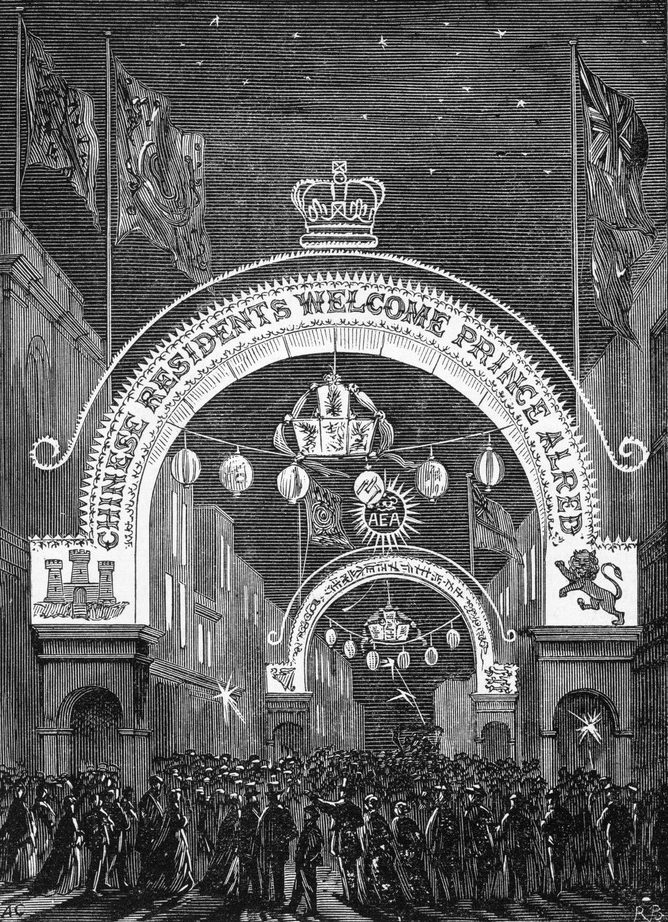 The residents of Chinatown established themselves as storekeepers, importers, furniture-makers, herbalists and in the wholesale fruit and vegetable industries, with a strong presence at the nearby Eastern Market, Melbourne, Eastern Market on Bourke Street. Christian churches were built and Chinese political groups and newspapers were subsequently formed. Other members of the Chinese community who lived and worked elsewhere used Chinatown to congregate with friends. The area also provided further support to new Chinese immigrants.
Early in its history, Chinatown developed a reputation for "salubrious" enterprises including opium dens, gambling houses and brothels, but maintained a distinctly "entrepreneurial air". By 1859, Victoria's Chinese population reached approximately 45,000, representing nearly 8.5% of the colony's total population.
Australian colonial author Marcus Clarke wrote in 1869:
Despite the cultural divide, several community leaders with strong Chinatown connections became influential and well-regarded among Melburnians more broadly, including businessman Lowe Kong Meng and missionary Cheok Hong Cheong. Also during the colonial period, several businesses run by Australians of European descent were based in Chinatown, including the offices of ''Table Talk (magazine), Table Talk'', for a time in the 1880s one of Melbourne's most popular magazines.
The residents of Chinatown established themselves as storekeepers, importers, furniture-makers, herbalists and in the wholesale fruit and vegetable industries, with a strong presence at the nearby Eastern Market, Melbourne, Eastern Market on Bourke Street. Christian churches were built and Chinese political groups and newspapers were subsequently formed. Other members of the Chinese community who lived and worked elsewhere used Chinatown to congregate with friends. The area also provided further support to new Chinese immigrants.
Early in its history, Chinatown developed a reputation for "salubrious" enterprises including opium dens, gambling houses and brothels, but maintained a distinctly "entrepreneurial air". By 1859, Victoria's Chinese population reached approximately 45,000, representing nearly 8.5% of the colony's total population.
Australian colonial author Marcus Clarke wrote in 1869:
Despite the cultural divide, several community leaders with strong Chinatown connections became influential and well-regarded among Melburnians more broadly, including businessman Lowe Kong Meng and missionary Cheok Hong Cheong. Also during the colonial period, several businesses run by Australians of European descent were based in Chinatown, including the offices of ''Table Talk (magazine), Table Talk'', for a time in the 1880s one of Melbourne's most popular magazines.
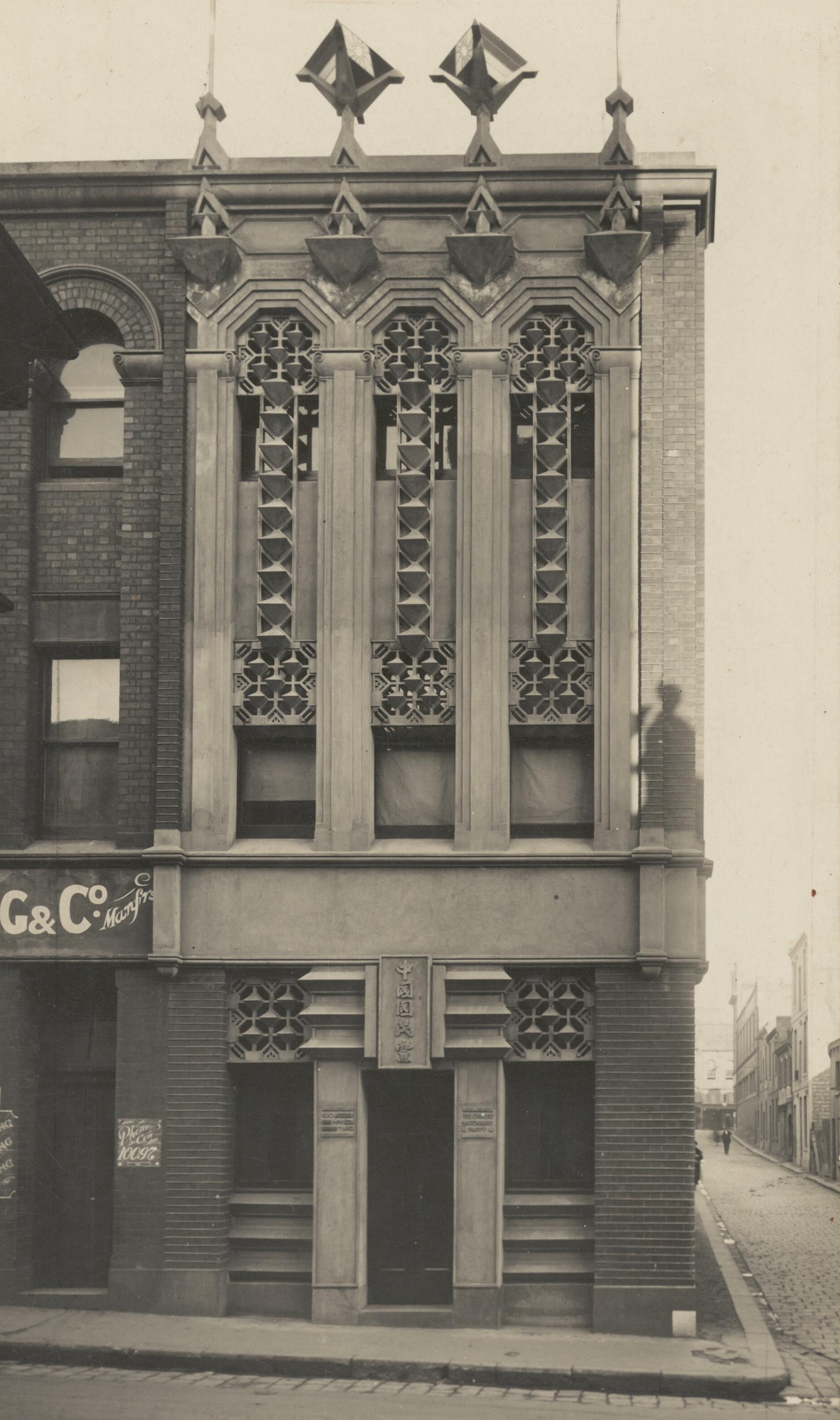 Chinatown peaked in the early 20th century in terms of population and activity, which was hampered by the Immigration Restriction Act 1901, Immigration Restriction Act, implemented after the federation of Australia in 1901. Chinatown's subsequent decline was further exacerbated by a general shift of businesses and residents from Melbourne's central business district (CBD) to the surrounding suburbs.
Melburnians of European descent, including University of Melbourne, University students, began frequenting Chinatown eateries in the 1920s, leading to the mainstream popularity of Australian Chinese cuisine by the mid-20th century. The dim sim, a staple of Australian Chinese cuisine, was invented in Chinatown by William Wing Young, in 1945, at his restaurant ''Wing Lee'', and has become a major snack food in takeaway outlets and supermarkets throughout the country. Young's daughter, Elizabeth Chong, became a television celebrity chef and Chinatown tour guide. Chinatown's potential as a tourist site was recognised in the 1960s by local entrepreneur and politician David Wang (Australia), David Wang, whose push for the redevelopment of Little Bourke Street led to the archways of today.
Chinatown peaked in the early 20th century in terms of population and activity, which was hampered by the Immigration Restriction Act 1901, Immigration Restriction Act, implemented after the federation of Australia in 1901. Chinatown's subsequent decline was further exacerbated by a general shift of businesses and residents from Melbourne's central business district (CBD) to the surrounding suburbs.
Melburnians of European descent, including University of Melbourne, University students, began frequenting Chinatown eateries in the 1920s, leading to the mainstream popularity of Australian Chinese cuisine by the mid-20th century. The dim sim, a staple of Australian Chinese cuisine, was invented in Chinatown by William Wing Young, in 1945, at his restaurant ''Wing Lee'', and has become a major snack food in takeaway outlets and supermarkets throughout the country. Young's daughter, Elizabeth Chong, became a television celebrity chef and Chinatown tour guide. Chinatown's potential as a tourist site was recognised in the 1960s by local entrepreneur and politician David Wang (Australia), David Wang, whose push for the redevelopment of Little Bourke Street led to the archways of today.
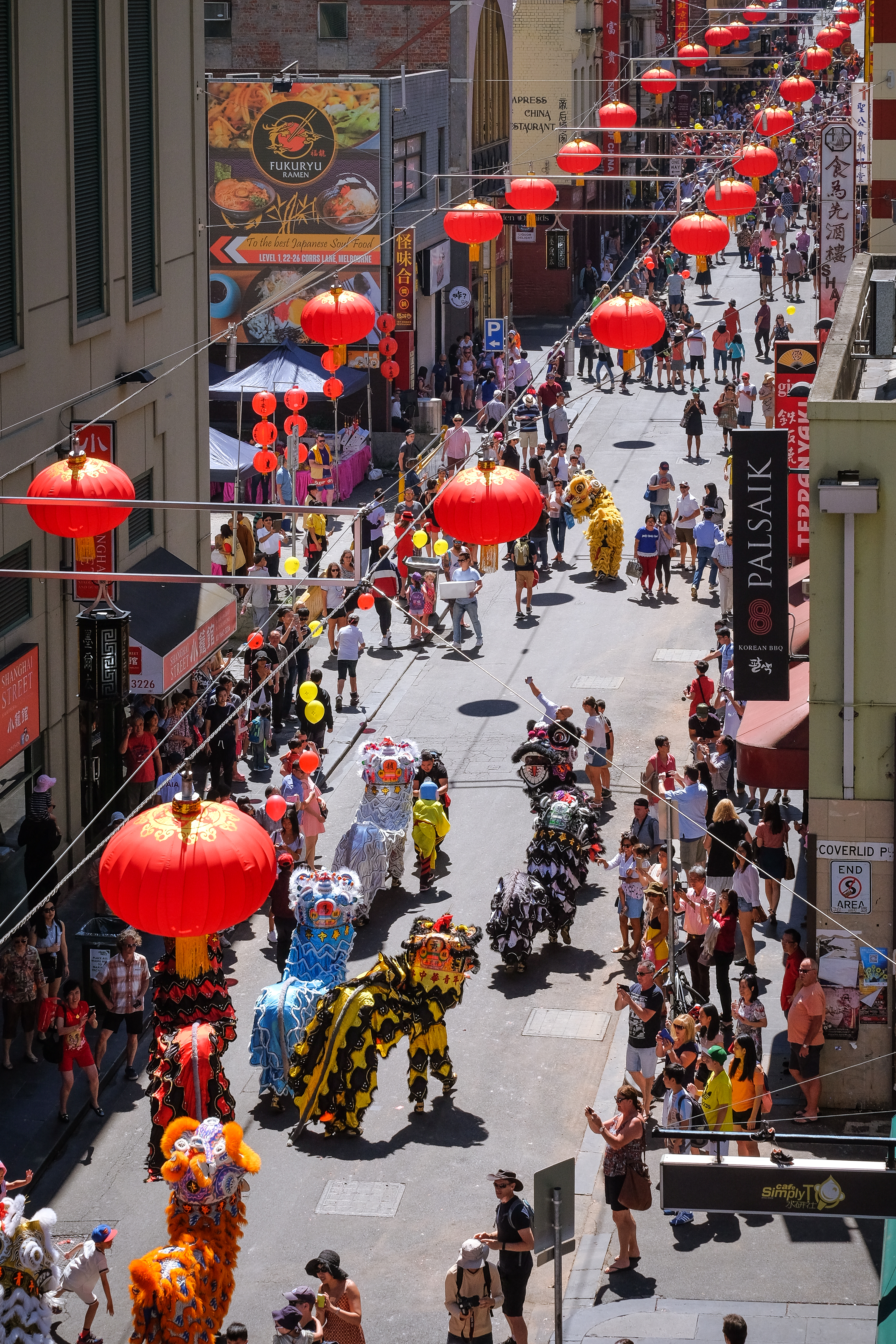 People from South China, Southern China, who settled in Melbourne, brought their Cantonese cuisine to Australia, although recently, Northern Chinese cuisine has made more of an appearance. Cantonese food was the first international cuisine to become popular as a take away food in Australia. The 1960s and 1970s saw the eradication of the White Australia policy, which led to greater immigration from Indochina, Singapore, Malaysia, Taiwan, Hong Kong and the People's Republic of China. In 2010, the ground floor of the Chinese Museum, Melbourne, Chinese Museum was remodelled as a visitor centre for Melbourne's Chinatown. In 2011, a Statue of Sun Yat-sen (Melbourne), memorial statue of Sun Yat-Sen, Dr Sun Yat-sen was unveiled outside the Museum's entrance, in celebration of the 100th anniversary of the founding of the Republic of China (1912–1949), Republic of China. The traditional Chinese New Year Lion Dance has always ended at this spot, but will now end with a blessing of the statue.
People from South China, Southern China, who settled in Melbourne, brought their Cantonese cuisine to Australia, although recently, Northern Chinese cuisine has made more of an appearance. Cantonese food was the first international cuisine to become popular as a take away food in Australia. The 1960s and 1970s saw the eradication of the White Australia policy, which led to greater immigration from Indochina, Singapore, Malaysia, Taiwan, Hong Kong and the People's Republic of China. In 2010, the ground floor of the Chinese Museum, Melbourne, Chinese Museum was remodelled as a visitor centre for Melbourne's Chinatown. In 2011, a Statue of Sun Yat-sen (Melbourne), memorial statue of Sun Yat-Sen, Dr Sun Yat-sen was unveiled outside the Museum's entrance, in celebration of the 100th anniversary of the founding of the Republic of China (1912–1949), Republic of China. The traditional Chinese New Year Lion Dance has always ended at this spot, but will now end with a blessing of the statue.
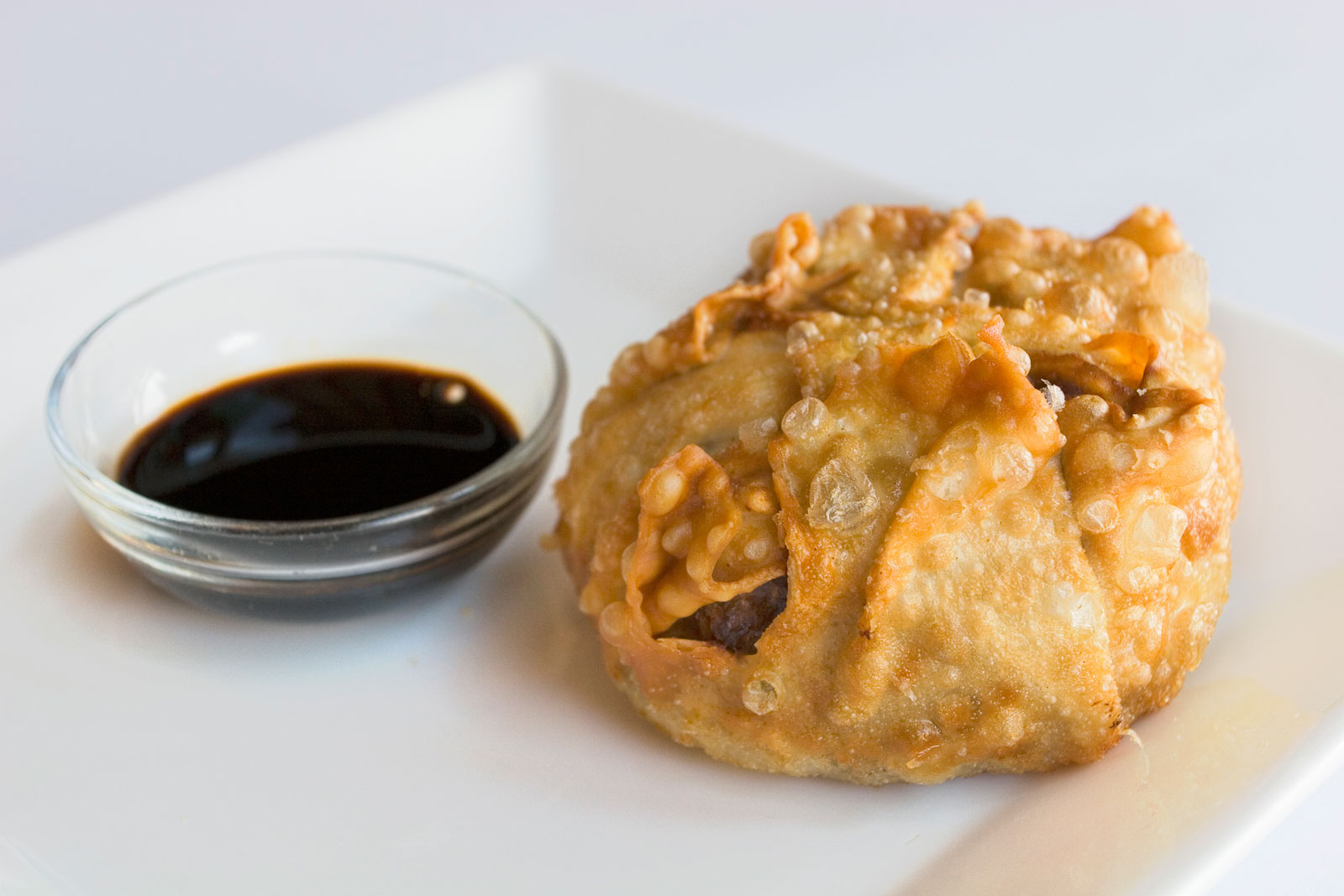 The Asian food festival is typically held in Spring and celebrates Asian cuisine with food tasting, stalls, cooking demonstrations, among others.
The Asian food festival is typically held in Spring and celebrates Asian cuisine with food tasting, stalls, cooking demonstrations, among others.
Chinese Museum, Melbourne - www.joyofmuseums.com - exterior.jpg, Cohen Place
File:Chinese Arch Little Bourke St Melbourne.jpg, Russell Street
Image:Melbourne Chinatown Archway.jpg, Exhibition Street
File:Gate to Melbourne Chinatown.jpg, Swanston Street
File:Num Pon Soon Melbourne.jpg, The Num Pon Soon building, built in 1863
File:Little Bourke Street buildings.jpg, The Sum Kum Lee building, built in 1887
File:Chinese Museum, Melbourne - www.joyofmuseums.com - exterior 2.jpg, Chinese Museum
File:The entrance of the Chinese Museum, Melbourne.jpg, Entrance of the Chinese Museum
File:Dr. Sun Yat Sen Statue.jpg, Statue of Sun Yat-sen (Melbourne), Statute of Sun Yat-sen
File:Melbourne Tianjin Garden.jpg, The Tianjin Garden on Spring Street, Melbourne, Spring Street
Chinese Museum
Museum of Chinese Australian History.
Chinatown Precinct Association website
{{Australia Chinatown Melbourne City Centre Asian-Australian culture in Melbourne, * Chinatowns in Australia, Melbourne Geography of Melbourne Culture of Melbourne Landmarks in Melbourne 1851 establishments in Australia Tourist attractions in Melbourne

 Chinatown () is an ethnic enclave in the Melbourne Central Business District, Central Business District (CBD) of Melbourne, Victoria (Australia), Victoria, Australia. Centred at the eastern end of Little Bourke Street, Melbourne, Little Bourke Street, it extends between the corners of Swanston Street, Melbourne, Swanston and Spring Street, Melbourne, Spring streets, and consists of numerous laneways, alleys and arcades. Established in the 1850s during the Victorian gold rush, it is notable for being the longest continuous Chinese settlement in the Western World and the oldest Chinatown in the Southern Hemisphere.
Melbourne's Chinatown has played an important role in establishing the culture of Chinese Australian, Chinese immigrants in Australia, and is still home to many Chinese restaurants, cultural venues, businesses and places of worship. Today, Melbourne's Chinatown is a major Tourism in Melbourne, tourist attraction, known for its architectural heritage, annual festivals and cuisines of Asian origins, as well as its karaoke venues, bars and fashion boutiques.
Beyond Chinatown and the CBD, Melbourne's Chinese community is well-represented in other areas of the city, most notably Box Hill, Victoria, Box Hill, where a $450 million development named "New Chinatown" is currently being constructed.
Chinatown is home to the Chinese Museum, Melbourne, Chinese Museum.
Chinatown () is an ethnic enclave in the Melbourne Central Business District, Central Business District (CBD) of Melbourne, Victoria (Australia), Victoria, Australia. Centred at the eastern end of Little Bourke Street, Melbourne, Little Bourke Street, it extends between the corners of Swanston Street, Melbourne, Swanston and Spring Street, Melbourne, Spring streets, and consists of numerous laneways, alleys and arcades. Established in the 1850s during the Victorian gold rush, it is notable for being the longest continuous Chinese settlement in the Western World and the oldest Chinatown in the Southern Hemisphere.
Melbourne's Chinatown has played an important role in establishing the culture of Chinese Australian, Chinese immigrants in Australia, and is still home to many Chinese restaurants, cultural venues, businesses and places of worship. Today, Melbourne's Chinatown is a major Tourism in Melbourne, tourist attraction, known for its architectural heritage, annual festivals and cuisines of Asian origins, as well as its karaoke venues, bars and fashion boutiques.
Beyond Chinatown and the CBD, Melbourne's Chinese community is well-represented in other areas of the city, most notably Box Hill, Victoria, Box Hill, where a $450 million development named "New Chinatown" is currently being constructed.
Chinatown is home to the Chinese Museum, Melbourne, Chinese Museum.
History
Gold rush beginnings and colonial era (1850s–1890s)
 The advent of the Victorian gold rush in 1851 attracted immigrants from around the world, including tens of thousands of Chinese people, Chinese prospectors. The majority were Cantonese-speaking male villagers from Hong Kong and nearby areas, including the southwestern districts of Guangdong (See Yup), and its capital city Guangzhou (Sam Yap). The eastern half of Little Bourke Street was considered convenient for these immigrants, as both a staging post and a place to pick up supplies en route to the goldfields in central Victoria. The earliest lodging houses were established in Celestial Avenue, off Little Bourke Street, and by 1855, Chinese houses and businesses lined the majority of Little Bourke Street from Elizabeth Street, Melbourne, Elizabeth to Russell Street, Melbourne, Russell streets.
It is notable for being the oldest Chinatown in the Southern Hemisphere, and the longest continuous Chinese settlement outside Asia, owing to San Francisco, California, San Francisco's Chinatown, San Francisco, California, Chinatown's relocation following the 1906 San Francisco earthquake, 1906 earthquake. The Victorian gold rush eventually waned, causing a shift from rural living and an influx of people migrating into metropolitan Melbourne, particularly Little Bourke Street, which already had a predominantly Chinese population.
The advent of the Victorian gold rush in 1851 attracted immigrants from around the world, including tens of thousands of Chinese people, Chinese prospectors. The majority were Cantonese-speaking male villagers from Hong Kong and nearby areas, including the southwestern districts of Guangdong (See Yup), and its capital city Guangzhou (Sam Yap). The eastern half of Little Bourke Street was considered convenient for these immigrants, as both a staging post and a place to pick up supplies en route to the goldfields in central Victoria. The earliest lodging houses were established in Celestial Avenue, off Little Bourke Street, and by 1855, Chinese houses and businesses lined the majority of Little Bourke Street from Elizabeth Street, Melbourne, Elizabeth to Russell Street, Melbourne, Russell streets.
It is notable for being the oldest Chinatown in the Southern Hemisphere, and the longest continuous Chinese settlement outside Asia, owing to San Francisco, California, San Francisco's Chinatown, San Francisco, California, Chinatown's relocation following the 1906 San Francisco earthquake, 1906 earthquake. The Victorian gold rush eventually waned, causing a shift from rural living and an influx of people migrating into metropolitan Melbourne, particularly Little Bourke Street, which already had a predominantly Chinese population.
 The residents of Chinatown established themselves as storekeepers, importers, furniture-makers, herbalists and in the wholesale fruit and vegetable industries, with a strong presence at the nearby Eastern Market, Melbourne, Eastern Market on Bourke Street. Christian churches were built and Chinese political groups and newspapers were subsequently formed. Other members of the Chinese community who lived and worked elsewhere used Chinatown to congregate with friends. The area also provided further support to new Chinese immigrants.
Early in its history, Chinatown developed a reputation for "salubrious" enterprises including opium dens, gambling houses and brothels, but maintained a distinctly "entrepreneurial air". By 1859, Victoria's Chinese population reached approximately 45,000, representing nearly 8.5% of the colony's total population.
Australian colonial author Marcus Clarke wrote in 1869:
Despite the cultural divide, several community leaders with strong Chinatown connections became influential and well-regarded among Melburnians more broadly, including businessman Lowe Kong Meng and missionary Cheok Hong Cheong. Also during the colonial period, several businesses run by Australians of European descent were based in Chinatown, including the offices of ''Table Talk (magazine), Table Talk'', for a time in the 1880s one of Melbourne's most popular magazines.
The residents of Chinatown established themselves as storekeepers, importers, furniture-makers, herbalists and in the wholesale fruit and vegetable industries, with a strong presence at the nearby Eastern Market, Melbourne, Eastern Market on Bourke Street. Christian churches were built and Chinese political groups and newspapers were subsequently formed. Other members of the Chinese community who lived and worked elsewhere used Chinatown to congregate with friends. The area also provided further support to new Chinese immigrants.
Early in its history, Chinatown developed a reputation for "salubrious" enterprises including opium dens, gambling houses and brothels, but maintained a distinctly "entrepreneurial air". By 1859, Victoria's Chinese population reached approximately 45,000, representing nearly 8.5% of the colony's total population.
Australian colonial author Marcus Clarke wrote in 1869:
Despite the cultural divide, several community leaders with strong Chinatown connections became influential and well-regarded among Melburnians more broadly, including businessman Lowe Kong Meng and missionary Cheok Hong Cheong. Also during the colonial period, several businesses run by Australians of European descent were based in Chinatown, including the offices of ''Table Talk (magazine), Table Talk'', for a time in the 1880s one of Melbourne's most popular magazines.
Federation, population decline and revival (1901–present day)
 Chinatown peaked in the early 20th century in terms of population and activity, which was hampered by the Immigration Restriction Act 1901, Immigration Restriction Act, implemented after the federation of Australia in 1901. Chinatown's subsequent decline was further exacerbated by a general shift of businesses and residents from Melbourne's central business district (CBD) to the surrounding suburbs.
Melburnians of European descent, including University of Melbourne, University students, began frequenting Chinatown eateries in the 1920s, leading to the mainstream popularity of Australian Chinese cuisine by the mid-20th century. The dim sim, a staple of Australian Chinese cuisine, was invented in Chinatown by William Wing Young, in 1945, at his restaurant ''Wing Lee'', and has become a major snack food in takeaway outlets and supermarkets throughout the country. Young's daughter, Elizabeth Chong, became a television celebrity chef and Chinatown tour guide. Chinatown's potential as a tourist site was recognised in the 1960s by local entrepreneur and politician David Wang (Australia), David Wang, whose push for the redevelopment of Little Bourke Street led to the archways of today.
Chinatown peaked in the early 20th century in terms of population and activity, which was hampered by the Immigration Restriction Act 1901, Immigration Restriction Act, implemented after the federation of Australia in 1901. Chinatown's subsequent decline was further exacerbated by a general shift of businesses and residents from Melbourne's central business district (CBD) to the surrounding suburbs.
Melburnians of European descent, including University of Melbourne, University students, began frequenting Chinatown eateries in the 1920s, leading to the mainstream popularity of Australian Chinese cuisine by the mid-20th century. The dim sim, a staple of Australian Chinese cuisine, was invented in Chinatown by William Wing Young, in 1945, at his restaurant ''Wing Lee'', and has become a major snack food in takeaway outlets and supermarkets throughout the country. Young's daughter, Elizabeth Chong, became a television celebrity chef and Chinatown tour guide. Chinatown's potential as a tourist site was recognised in the 1960s by local entrepreneur and politician David Wang (Australia), David Wang, whose push for the redevelopment of Little Bourke Street led to the archways of today.
 People from South China, Southern China, who settled in Melbourne, brought their Cantonese cuisine to Australia, although recently, Northern Chinese cuisine has made more of an appearance. Cantonese food was the first international cuisine to become popular as a take away food in Australia. The 1960s and 1970s saw the eradication of the White Australia policy, which led to greater immigration from Indochina, Singapore, Malaysia, Taiwan, Hong Kong and the People's Republic of China. In 2010, the ground floor of the Chinese Museum, Melbourne, Chinese Museum was remodelled as a visitor centre for Melbourne's Chinatown. In 2011, a Statue of Sun Yat-sen (Melbourne), memorial statue of Sun Yat-Sen, Dr Sun Yat-sen was unveiled outside the Museum's entrance, in celebration of the 100th anniversary of the founding of the Republic of China (1912–1949), Republic of China. The traditional Chinese New Year Lion Dance has always ended at this spot, but will now end with a blessing of the statue.
People from South China, Southern China, who settled in Melbourne, brought their Cantonese cuisine to Australia, although recently, Northern Chinese cuisine has made more of an appearance. Cantonese food was the first international cuisine to become popular as a take away food in Australia. The 1960s and 1970s saw the eradication of the White Australia policy, which led to greater immigration from Indochina, Singapore, Malaysia, Taiwan, Hong Kong and the People's Republic of China. In 2010, the ground floor of the Chinese Museum, Melbourne, Chinese Museum was remodelled as a visitor centre for Melbourne's Chinatown. In 2011, a Statue of Sun Yat-sen (Melbourne), memorial statue of Sun Yat-Sen, Dr Sun Yat-sen was unveiled outside the Museum's entrance, in celebration of the 100th anniversary of the founding of the Republic of China (1912–1949), Republic of China. The traditional Chinese New Year Lion Dance has always ended at this spot, but will now end with a blessing of the statue.
Culture
Chinese New Year
The Chinese New Year is primarily celebrated in Chinatown on the first Sunday of the new Lunar year. It is the original and primary location of Melbourne's CNY festival, although the festival has expanded to multiple CBD sites in recent years, including Crown Melbourne, Crown Casino. The celebrations feature traditional and contemporary Chinese cultural activities and festivities, dances, Chinese opera and singing, karaoke competition, numerous stalls of culinary delights, arts and crafts, Chinese chess competitions, calligraphy and children's events. The Dai Loong Dragon Parade, as well as the main Lion Dances (performed by the Chinese Youth Society of Melbourne, Chinese Masonic Society and Hung Gar Martial Arts School) begin at roughly 10am on the Sunday following New Year, and run till roughly 4pm. The Dragon parade begins and ends at Melbourne's Chinese Museum.Asian Food Festival
 The Asian food festival is typically held in Spring and celebrates Asian cuisine with food tasting, stalls, cooking demonstrations, among others.
The Asian food festival is typically held in Spring and celebrates Asian cuisine with food tasting, stalls, cooking demonstrations, among others.
Other Chinese communities
Beyond the original Chinatown in the CBD, several newer Chinese communities have developed in Melbourne's eastern suburbs, such as Box Hill, Victoria, Box Hill, Glen Waverley, Victoria, Glen Waverley and Springvale, Victoria, Springvale. An older community, with links back to the 1850s gold rush, is to be found in the regional city of Bendigo, Victoria, Bendigo, 150 km north-west of Melbourne.Cultural depictions
Tom Roberts, one of the leading figures of Australian Impressionism, created sketches of life in Little Bourke Street in the 1880s. During the Second World War, modernist Eric Thake created a series of works depicting Chinatown shopfronts, which now belong in the State Library of Victoria's painting collection. Fergus Hume's ''The Mystery of a Hansom Cab'' (1886), one of the most famous mystery crime novels of the Victorian era, is based largely on the author's observations of life in Little Bourke Street, including the "dark recesses" of the Chinese Quarter, where Detective Kilsip, the novel's protagonist, pursues his suspect. Alfred Dampier's ''Marvellous Melbourne'' play of the same year features a scene in a Chinatown opium den. Between 1909 and 1910, Melbourne's first Chinese-language newspaper, the ''Chinese Times'', serialised Wong Shee Ping's novel ''The Poison of Polygamy'', the first novel written in Literary Chinese to be published in Australia and possibly the West. Set in Victoria during the 1850s gold rush, the novel describes life in Chinatown. Set in Little Bourke Street, Elinor Mordaunt's 1919 novel ''The Ginger Jar'' is about a love affair between a Chinese Australian hawker and a European woman. A pivotal scene of the 1911 silent film ''The Double Event (1911 film), The Double Event'', directed by W. J. Lincoln, takes place in Melbourne's Chinatown. The 1997 Hong Kong action film ''Mr. Nice Guy (1997 film), Mr. Nice Guy'', starring Jackie Chan, is set in Melbourne, with several scenes shot in Chinatown.Heritage sites
Archways
Buildings
Landmarks
See also
* Heavenly Queen Temple (Melbourne) * Chinese Museum, MelbourneReferences
External links
Chinese Museum
Museum of Chinese Australian History.
Chinatown Precinct Association website
{{Australia Chinatown Melbourne City Centre Asian-Australian culture in Melbourne, * Chinatowns in Australia, Melbourne Geography of Melbourne Culture of Melbourne Landmarks in Melbourne 1851 establishments in Australia Tourist attractions in Melbourne